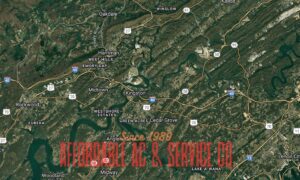Buckle up, folks! Kiteboarding – that exhilarating blend of windsurfing, wakeboarding, surfing, and paragliding – is taking the sports world by storm. As its fanbase continues to swell, the stakes are getting higher, and the rides are getting wilder!
But here’s the kicker – to really ride those waves like a pro and feel the full-throttle thrill of this sport, you’ve got to gear upright. Trust us, the right equipment is a game-changer. It’s the difference between a nail-biting ride and a smooth sailing session. In this blog, we’ll dive headfirst into the world of kiteboarding gear.
Understanding the Components of Kiteboarding Gear
The Four Pillars of Kiteboarding Gear
Like an orchestra that plays harmoniously, the kite, board, harness, and control bar work together to create the perfect kiteboarding experience. These are the heart and soul of the sport, each bringing a unique tune to the symphony.
- The Kite: This is your sail, catching the wind and propelling you forward. It’s more than a colorful canvas in the sky – it’s your driving force.

- The Board: Think of it as your magic carpet. It keeps you skimming across the water’s surface, providing the platform for all your tricks and turns.
- The Harness: The unsung hero of kiteboarding. It takes the strain off your arms, allowing you to ride longer and go further.
- The Control Bar: Your kite’s steering wheel. It allows you to manipulate the kite’s direction and speed and even perform those breathtaking aerial stunts.
The Role They Play
Now that we’ve met the band let’s explore their concert – the kiteboarding performance. Each gear has a specific role, and understanding this can genuinely elevate your kiteboarding game.
The kite, your wind-catcher, is the element that brings the raw power. It must be responsive and robust, deftly reacting to your commands and wind shifts.
Meanwhile, the board must be agile and sturdy, capable of slicing through waves while offering the rider stability and control.
Your harness, the bridge between you and the kite, must be comfortable and secure, efficiently transferring the kite’s power to your body.
Finally, the control bar must offer intuitive control and quick-release features for safety. In essence, every component has a part to play in the excellent performance of kiteboarding!
Kiteboarding Kite: Choose the Right One
Dive into Kite Shapes
Let’s immerse ourselves in the world of kite shapes. It’s not just about the aesthetics; the condition of your kite significantly affects your ride. We’re talking about C-kites, Bow kites, Hybrid kites, and Foil kites.
- C-Kites – Traditionalists at heart might gravitate towards the C-Kite. Its deep, curved shape and narrow arc deliver power and speed. It’s like the sports car of kites – you’re in for a thrill, but you need skills to control it!
- Bow Kites – With a flatter profile and wider arc, Bow kites are the polar opposite of C-Kites. They offer incredible wind range and are forgiving, making them perfect for beginners. Think of them as your trusty all-terrain vehicle, handling all conditions gracefully.
- Hybrid Kites – Can’t decide between a C-Kite and a Bow kite? You don’t have to! Hybrid kites are your perfect middle ground. They offer the stability of Bow kites with the punch of C-kites. It’s like getting the best of both worlds!
- Foil Kites – These are your soft, inflatable kites for light wind conditions. They’re like your handy pick-up truck – they won’t disappoint you when the wind does!
Choosing Your Kite
So, how do you select from this array? Three things – wind conditions, skill level, and personal preference.
Remember, not all kites are equal in all wind conditions. A Bow kite, for instance, can handle more varied wind conditions than a C-Kite. Skill level also plays a critical role. You might find the Bow or Hybrid kite easier to maneuver if you’re a beginner. Lastly, your personal preference. Each kite feels different on the water. Try out a few to find out which one you vibe with.
The Kiteboarding Board: Types and Selection Criteria
Understanding Board Options
Just like kites, the board you choose can dramatically affect your performance. Let’s take a look at the most common types:
- Twin Tip – Twin tip boards are famous for their versatility. They are symmetrical, allowing you to ride in both directions. Perfect for beginners, think of these boards as your reliable mountain bike, quickly taking you anywhere!
- Directional – Unlike Twin tips, Directional boards are designed for one-way travel. They’re the choice for wave riding and big airs. Like a touring bike, it’s about the journey rather than the speed.
- Hydrofoil – Hydrofoil boards are for you if you crave the sensation of floating above the water. These boards literally lift you off the water, making you feel like you’re riding on clouds!
Selecting Your Board
Windance suggests that when choosing your board, consider your skill level, weight, and riding style. Beginners may find Twin tip boards easier to start with. As for weight, the larger you are, the larger your board should be. It’s all about buoyancy, folks! Your riding style also matters. Love riding waves? Go for a Directional. Like the feeling of floating above water? Choose a Hydrofoil.
Harness and Control Bar: Backbone of Kite Control
Regarding kiteboarding, a harness is more than just a piece of equipment—it’s your lifeline. Picture this: you’re riding the waves, the wind in your face, and the harness connects you to your kite. It distributes the kite’s force across your body, taking the strain off your arms.
There are three main types of harnesses:
- Waist Harnesses: These sit around your midriff. They’re popular with seasoned riders for their freedom of movement.
- Seat Harnesses: Think of these as a pair of shorts. They’re great for beginners, offering more lower back support and stability.
- Vest Harnesses: These are the multi-taskers. They combine the benefits of a waist harness with a protective vest.
Cracking the Code of Control Bars
Now, let’s talk about the control bar. It’s like the steering wheel of your kite. It guides your kite’s direction and adjusts its speed. But remember, not all control bars are created equal. The right one depends on your kite type, riding style, and personal comfort. It’s a balancing act!
Additional Kiteboarding Gear Essentials
Gear Up with Kiteboarding Accessories
You’ve got your kite, board, harness, and control bar. But wait! We’re not done yet. Safety is a non-negotiable aspect of kiteboarding, so let’s gear up with some essentials:
- Helmets: Just like riding a bike, protect that noggin!
- Wetsuits: Temperature can be a game-changer. Stay warm in cold water.
- Life vests: Safety first, remember?
- Safety leashes: Keep your kite from flying away during a wipeout.
Each adds an extra safety layer and can significantly enhance your kiteboarding experience. So, suit up and ride the wind with confidence!
Conclusion: Sailing Back to the Shore
Choosing the appropriate equipment can completely transform your kiteboarding experience. Every component is essential, from the design of your kite to the type of board. They all work together to improve your performance like a well-orchestrated symphony.
Last Words: Choosing Your Course
Don’t allow the abundance of choices to paralyze you. Your riding conditions, personal preferences, and skill level should influence your gear selection. Keep in mind that the main goal is to enjoy yourself while kiteboarding safely. Here’s some parting advice: choose gear that improves your riding rather than merely choosing cool gear. Happy travels!






























